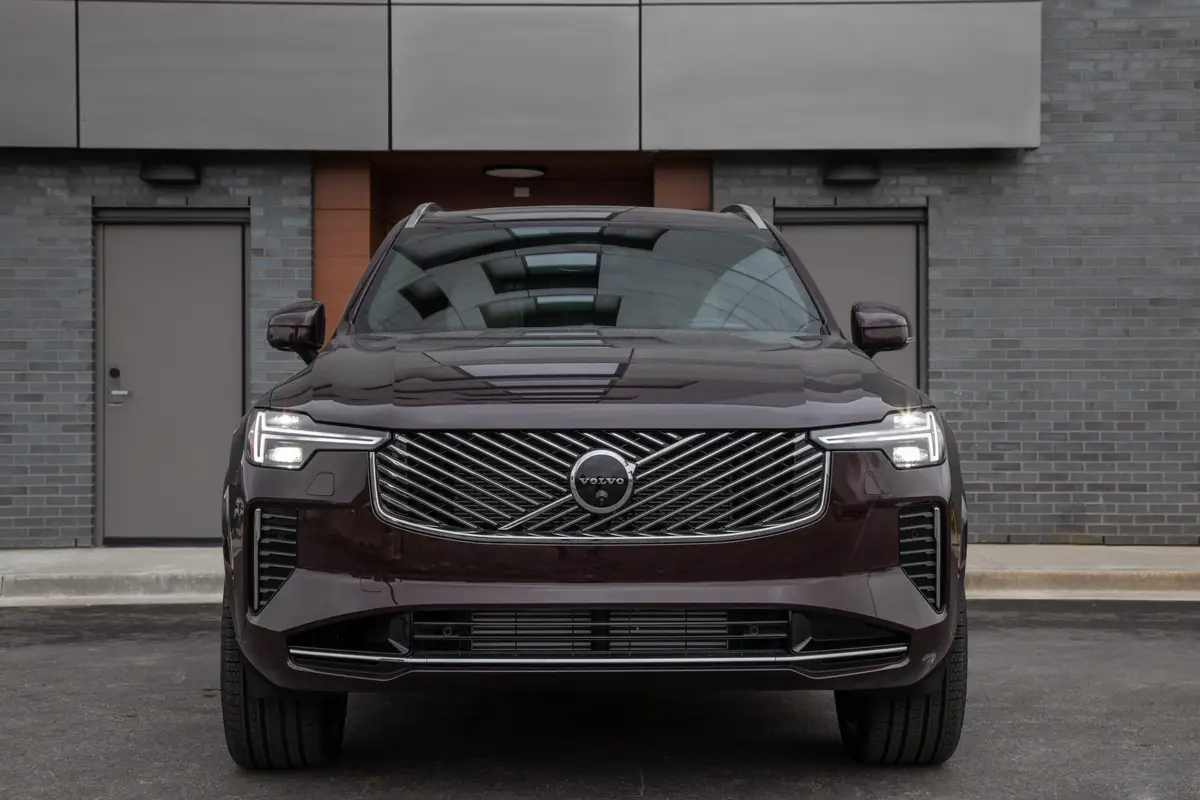2017 Honda Ridgeline: First Drive

The original Honda Ridgeline (2006-2014) was a polarizing, quirky-looking, carlike-driving midsize pickup truck based on a modified Honda Odyssey chassis. The all-new 2017 Honda Ridgeline isn't any less polarizing, but it does have a more traditional design and still offers the most carlike ride in the segment. However, now it's based on the sophisticated Honda Pilot SUV chassis.
In a segment where the Chevrolet Colorado and GMC Canyon are the towing champs and the Toyota Tacoma is the off-road champ, is there a niche that the Ridgeline can claim? Although the Ridgeline has never been a big seller, it did find traction with families and risk-taking non-truck folks. The new-and-improved 2017 Ridgeline, due in large part to its structural and technological improvements, should have much greater appeal and success.
If Honda has taken a risk in any way with the new Ridgeline besides basing it on the Pilot, it's in the number of trim levels it now offers: five for front-wheel-drive models and seven for all-wheel-drive versions. The base front-wheel-drive model will start at $30,375, with the top-of-the-line Black Edition listing for $43,770 (prices include destination), neither of which is outside the segment norm.
Exterior
The rounded front hood, stretched grille, and smooth corners and edges of the bumpers make it clear Honda wants this pickup to pull in customers from the crossover and SUV segment. The new Ridgeline sports a more mainstream pickup profile. But make no mistake, this is still a unibody chassis. That means there is no separation between bed and cabin; it only appears that way because of strategically placed rubber molding. To a certain extent, Honda is playing a clever game of "if it looks like a duck … it might not be a duck." Honda is betting there are customers who want a vehicle that looks like a truck, yet drives and functions more like a crossover.
Beyond the overall look and design, many of the Ridgeline's underpinnings are pulled straight from the current-generation Pilot; however, the unibody chassis has been lengthened to accommodate the full-size rear door. The 3.5-liter V-6 Earth Dreams engine, six-speed transmission and new Intelligent Variable Torque Management all-wheel-drive system is also identical to the Pilot, but it's been calibrated differently for the Ridgeline's size and expected use. One change that should improve the 2017 Ridgeline's appeal is that for the first time buyers can choose front-wheel drive, which will offer slightly better fuel economy and less towing capacity.
How It Drives
Much of our drive time was spent in the well-equipped RTL-E trim level all-wheel-drive Ridgeline navigating through several small towns on two-lane highways and onto the congested freeways around San Antonio.
The new direct-injection 3.5-liter V-6 engine, at 280 horsepower and 262 pounds-feet of torque, has 30 more horsepower and 15 more pounds-feet of torque than the previous V-6. The improved engine will be offered with a six-speed console shifter (the nine-speed available in the Pilot is not offered for Ridgeline) with a "D4" button that holds gears a little longer when shifting up and down. We liked that the new engine has a vastly improved throttle response; it even jumps off the line, no doubt thanks in large part to the improved horsepower and torque curve.
When it comes to fuel economy, two-wheel-drive models get an EPA-estimated 19/26/22 mpg city/highway/combined, while all-wheel-drive versions get 18/25/21 mpg. These ratings are significantly better than the vehicle it's replacing and bring the Ridgeline into the same mpg ballpark as the other midsize gas engines. However, none of those beat the Colorado/Canyon 2.8-liter inline four-cylinder Duramax diesel, which gets 22/31/25 mpg.
As to real-world fuel economy, during our highway cruise on less-congested freeways we did some feather-footing as well as some spirited driving during our 120-mile route. Cruising along the freeway, we averaged just more than 21 mpg in our all-wheel-drive RTL-E. During the challenging, slow-going 30-mile stretch of the route, we saw the number drop just below 19 mpg. In both cases, that's much better than what we've seen with the previous model, which was closer to 17 mpg no matter what type of driving we did.
We didn't have the chance to test a two-wheel-drive version, but since this driveline is lighter, we'd expect the handling characteristics and steering feel to be a touch more sluggish, given the absence of an intelligent, predictive all-wheel-drive system. Honda is predicting that less than 20 percent of total Ridgeline sales will be two-wheel drive.
Having more horsepower is a huge strength for the new Ridgeline, especially since the new truck weighs, depending on the configuration, about the same as the previous model while offering 3 extra inches of wheelbase (and more than 14 inches of added wheelbase when compared to Honda's Pilot SUV). But what we think will impress midsize truck buyers is the stronger, faster and smarter all-wheel-drive Intelligent Variable Torque Management System, i-VTM4, with torque vectoring capability, which turns it into a cornering champ. As our winding drive route tightened up, we found it increasingly difficult to put ourselves into any type of under-steer situation. Taking tight curves felt more like carving with extra grip than the normal front-end plowing of a midsize pickup.
Even on dirt the all-wheel-drive Ridgeline resists under-steer, thanks to the ability to accelerate the outside wheel when it detects a skidding situation, most commonly experienced in tight cornering. The added grip provides a more balanced feel to the unibody chassis, and when combined with the front and rear independent suspensions, our test truck felt more like a poised sport sedan than a rugged midsize pickup. Additionally, competitors such as the Colorado and Tacoma have tall step-in heights to provide more ground clearance, but that makes them feel a bit more top heavy. The Ridgeline, with its lower floor and step-in height, has a lower center of gravity, giving it the feel of a crossover or low-slung SUV when making tight turns.
How It Tows
We did a little towing with an 18-foot flatbed loaded with a 4×4 side-by-side and all-terrain vehicle totaling about 4,000 pounds; the maximum towing capacity for all-wheel-drive Ridgelines is 5,000 pounds, while two-wheel-drive models are max rated for 3,500 pounds. About 10 percent of the tow weight rests on the standard Class III hitch.
During our loop with the trailer, we found the Ridgeline to be stable, but all the test trucks were equipped with aftermarket trailer brake controllers. All four-wheel-drive Ridgelines can be pre-wired for a controller, but Honda does not offer one as an option. We were familiar with the Ridgeline's unibody chassis and the independent rear suspension from driving the Pilot, so we knew this setup would give us better ride and handling dynamics when driving with an empty bed, but we were surprised by how solid and sturdy it felt with the light-duty trailer in tow. Although there is no Tow/Haul switch, the D4 setting offers more aggressive downshifts and holds the upshifts a touch longer during acceleration. We also liked the standard hill-start assist that keeps the pickup from rolling back when starting from a stop on an incline. Towing or not, that's a good feature to have on a pickup.
The final course during our drive gave us the chance to get wet and dirty on a private ranch with competitors Tacoma and Colorado (V-6 4×4 versions). As we expected, the new Ridgeline handled the choppy dirt roads and lightly roughened terrain with more confidence than the old one, and the torque-vectoring all-wheel drive capability prevented the rig from sliding off the dusty roads or plowing into the fields. We also ran a 50-yard stretch of fine beach sand that gave us a chance to cycle through the different drive modes of the Intelligent Terrain Management system; we were pleasantly surprised by how much difference there was between the different traction settings as the system changed the transmission gearing, tractive forces at each wheel and the throttle sensitivity.
Missed Opportunity
The terrain system offers four settings — Normal, Snow, Mud and Sand — each with a different set of adjustments for the powertrain to make driving in those conditions a safer proposition. Like the previous-generation Ridgeline, Honda does not include a low-range ratio in its four-wheel-drive pickup. Although we understand that Honda buyers are likely to want a "set-it-and-forget-it" traction system, we think Honda missed an opportunity by limiting the number of settings. Why not include Sport or Tow/Haul settings? After all, it's just software.
It's also worth noting that while the transmission does have the one-touch D4 mode to lock out the top overdrives, the Ridgeline does not allow the driver to choose a specific gear or to manually shift through the gears that exist. We understand the need to have a simple, invisible setup, but why not let the owner choose to have access to it? After all, they paid for it.
Interior Features
The feel of the interior, like the exterior, is again quite similar to the Pilot, with front captain's chairs (each with an inside armrest), soft-touch dash and door materials, and a sizable center console. The six-speed transmission shifter takes up a little bit of room but does fall easily to hand. There are several cubbies, charging points and cupholders to accommodate gear and coffee mugs. Likewise, the wide-mouth center console provides modular storage and contains USB and 12-volt outlets.
The front seats on our upper-trim Ridgeline were supportive, comfortable and provided a more commanding, upright seating position than any of the taller midsize competitors. Midsize pickups typically sit a little lower than full-size pickups. Likewise, forward visibility in the new Ridgeline is very good given the sloping front hood and height-adjustable seating — something no other pickup in this class offers.
The rear seating of the Ridgeline always has been one of its key differentiators in the segment. Honda has a unique flip-up rear seat that provides flexible storage and cargo-carrying capability. The only tradeoff is that the rear seats are not as padded, and the seatbacks will not fold flat as in every other pickup in this class.
We also must call out the quietness of the cabin. Although strides have been made with vehicles such as the new Colorado, Canyon and Tacoma, the level of quietness in this new Ridgeline is simply huge step above the competition. The Ridgeline cabin is tighter, has triple door seals, offers more door and bed panel insulation, and even has special sound-deadening spray on all the window glass. The results are impressive.
Tech and Safety
Naturally, this new midsize pickup offers connectivity features similar to the new Honda Pilot in the form of a multimedia system that uses an Android-based 5- or 8-inch capacitive touch-screen for audio controls, navigation and other vehicle settings. To make adjustments, you must touch or slide your finger on the screen. We're not a fan.
This type of system requires the driver to find and adjust controls by sight and touch, taking the driver's eyes off the road. We would have liked to see some control knobs or buttons that work in conjunction with the touch-screen. Thankfully there are audio controls on the steering wheel.
Honda offers just about every state-of-the-art safety feature on the new Ridgeline, many that are class exclusive. Among them: the new Advanced Compatibility Engineering body structure that transfers impact forces more efficiently around the newly reinforced cabin and bed wall; multistage front, side and curtain airbags with rollover sensors; braking assist and more. Upper trim levels include Honda Sensing, which bundles adaptive cruise control, lane keeping assist, road departure mitigation and forward collision warning. The system uses a front-facing camera and radar system to keep track of where the truck is at all times. Although crash-testing had not been conducted as of publication, Honda anticipates receiving top scores from the National Highway Traffic Safety Administration and the Insurance Institute for Highway Safety.
Favorite Features
The upgraded bed is our favorite part of this truck. The whole inner bed is made from highly durable, scratch-resistant plastic, and it's rated to carry more than 1,500 pounds of cargo. The bed offers upper and lower tie-down cleats, each with a 350-pound strength rating. The dual-action tailgate that swings open like a door and drops down like a tailgate carries over from the old Ridgeline along with the in-bed trunk, both of which are segment exclusives. We should note that the bed of the truck is much shallower than the competition, measuring just 16 inches deep — almost 5 inches less than most of the other players in this segment. That's largely due to the spare tire being stored under the bed at the back of the storage trunk.
A cool option we like — available on the top-level RTL-E and Black Edition — is the audio system Honda engineers embedded into the bed by mounting four "exciters" to the inside of the bed walls, effectively turning the entire bed into a speaker. Since the exciters are inside the closed bed walls, they are protected from damage by cargo loads or bad weather. What you get is a great place to play music. And if you have the power inverter (hidden in a small storage box in the bed wall), you can plug in a blender, TV or any other small electrical appliance you may want to use.
Underwhelming Features
Even with all the upgrades and improvements, the new Honda Ridgeline still had a few flaws that made us scratch our heads. For instance, why would a new vehicle designed for work lack a full-size spare tire? And why would anyone hide that spare in a place where you can't get to it if you have cargo loaded in the bed? Also, why would anyone include a 400-watt inverter in a vehicle and make it a two-prong outlet when many electrical plug-ins, including many tool battery chargers, need a three-prong outlet? Finally, if there's one overriding problem that gives us pause, it's that for the sake of simplicity, Honda gave buyers fewer choices: They don't have the ability to choose gears or load-carrying settings, nor do they have better wheel and tire choices. Pickup manufacturers should give owners the ability to choose the options that meet their needs. Honda should have provided as many options as possible rather than taking them away.
Summing Up
The Honda Ridgeline always has been a unique choice for those yearning for a vehicle that fulfills family needs and isn't too big to fit in their garage. Although the new model looks a bit more like a traditional pickup now, it's still more of a sport utility truck than a function-first pickup truck. Giving it the front-end design of the jelly-bean-shaped Pilot won't attract more midsize pickup shoppers, but it is likely to appeal to SUV and crossover buyers who want something different.
The Ridgeline's strength still lies in its carlike ride and handling. And at a time when interest in pickups seems to be growing, offering a newly updated and distinctive choice could be exactly what the midsize segment needs.
Although some will continue to argue that the Ridgeline is not a real pickup, the issue that deserves debate is whether the 2017 Ridgeline's capabilities meet your needs. Our guess is that for customers looking for a moderately sized and priced family truck, this easygoing pickup could be exactly the right fit.
Manufacturer images


Former PickupTrucks.com Editor Mark Williams lives in Southern California with his wife and enjoys camping, hiking, skiing, big trucks and towing, and backcountry 4x4 driving.
Featured stories




